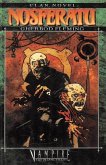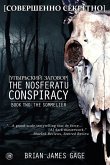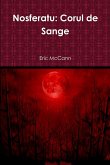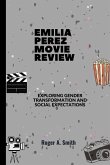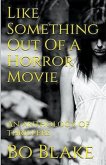Movie Review: Nosferatu (2024) - A Chilling Rebirth of a Horror Classic In 2024, Nosferatu returns to the big screen, bringing with it a hauntingly modern reinvention of the silent horror masterpiece that first terrified audiences in 1922. Directed by the visionary filmmaker Robert Eggers, known for his atmospheric and unsettling works like The Witch (2015) and The Lighthouse (2019), this new adaptation of F. W. Murnau's iconic Nosferatu seeks to blend the gothic terror of the original with contemporary cinematic techniques, breathing new life into the vampire mythos for a new generation. At the heart of this reimagining is the sinister figure of Count Orlok, a being who remains one of cinema's most terrifying monsters. This version, portrayed by the unsettling Bill Skarsgård, brings a fresh, unnerving depth to the character, embodying a more nuanced, tragic, and yet equally monstrous vampire than in the original film. Skarsgård's portrayal of Orlok is a masterclass in physicality, drawing on his ability to bring menace to even the quietest movements. From his contorted frame to his piercing, almost otherworldly gaze, Skarsgård evokes a sense of dread in every frame, standing as a worthy successor to the legendary Max Schreck's portrayal of the character in the 1922 version. The plot, while maintaining the core elements of Murnau's Nosferatu, is given a modern twist. The story follows the familiar trajectory of the ill-fated journey to Transylvania, where young real estate agent Thomas Hutter (played by a brooding, understated Nicholas Hoult) is sent to the eerie, remote castle of Count Orlok. As in the original, Hutter's discovery of Orlok's horrifying nature leads to a series of events that culminates in the vampire's arrival in the town of Wisborg. However, Eggers' adaptation goes deeper into the psychology of the characters and their motivations, presenting a darker, more introspective examination of human fragility, obsession, and fear. The film's cinematography is nothing short of breathtaking. Collaborating once again with cinematographer Jarin Blaschke (a frequent Eggers collaborator), Nosferatu is a visual feast that masterfully blends shadow and light to create an atmosphere of growing dread. The film leans heavily into the chiaroscuro style, with sharp contrasts between light and dark, evoking the iconic look of German expressionism but with a contemporary edge. The use of wide, empty landscapes and claustrophobic interiors amplifies the sense of isolation and impending doom, as the characters are dwarfed by the suffocating vastness of their surroundings. The haunting score, composed by Mark Korven, further elevates the unsettling atmosphere, using a minimalist approach that lets the silence and the occasional discordant notes linger in the mind long after the credits roll. The film also delves into the themes of corruption, mortality, and the nature of evil. Eggers' Nosferatu presents Orlok not just as a predator, but as a manifestation of human desires and fears. The vampire here is an ancient force, a reminder of the dark, unspoken things lurking within humanity's own nature. This interpretation takes the traditional vampire archetype and recontextualizes it in a way that feels fresh and profound, making the horror both external and internal. One of the standout aspects of the 2024 Nosferatu is its treatment of women's roles, especially in the portrayal of Ellen (played by the ethereal Lily-Rose Depp), Hutter's wife, who plays a much more active role in this adaptation. She is not merely a passive victim as in the original, but a key figure in the battle against Orlok. The film explores her deepening connection to the vampire, subtly hinting at a mystical, almost spiritual link between the two, adding layers of intrigue to the narrative.
Hinweis: Dieser Artikel kann nur an eine deutsche Lieferadresse ausgeliefert werden.
Hinweis: Dieser Artikel kann nur an eine deutsche Lieferadresse ausgeliefert werden.


